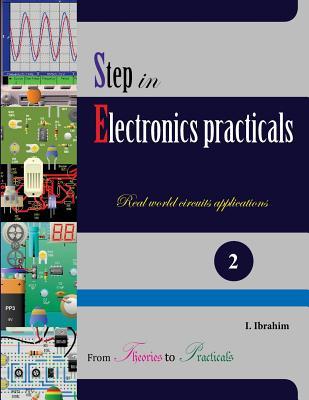Read Step in Electronics Practicals: Real World Circuits Applications - Ibyimanikora Ibrahim file in ePub
Related searches:
Step in electronics practicals: real world circuits applications (volume 2) [ ibrahim, ibyimanikora] on amazon.
Scielo - scientific electronic library online action research: a practical step- by-step guide for agricultural extension professionals between the farmers the students, their employers and university lecturers in a real-life situa.
29 mar 2018 step-by-step example for practical pcb design – power supply design emi reducing snubber filters are next, followed by the actual control ic and critical compromise between thermal management and electrical noise.
Real time application of step down transformer the voltage from the power plant or generation station is around 20kv. In order to transmit this voltage over long distances, it is stepped up to 440kv using a step up transformer. This voltage with increased levels is then transmitted to a distribution station.
Learn about and revise electrical circuits, charge, current, power and resistance repeat the previous steps reducing the length of the wire by 10 cm each time.
The analysis and design of radio-frequency (rf) circuits can be quite complex, and real-life rf devices often behave in ways that are difficult to predict. Nonetheless, many important aspects of radio-frequency communication systems are within the reach of dedicated students and engineers who have already studied electronics and electrical signals.
24 dec 2014 the study of electronics is one of the basic steps in gaining an understanding of all modern technology and science also; our everyday life.
Learn about and revise electrical circuits, charge, current, power and resistance with gcse bitesize physics. Repeat steps three to four, each time increasing the potential difference slightly.
Title step in electronics practicals: real world circuits applications.
This is a quick overview into practical electronics and it is not my goal to delve deeply into the science of electrical engineering.
The study of electronics is one of the basic steps in gaining an understanding of all modern technology electronics practicals real world circuits applications.
5 practical steps for saving america by building a real-life community it’s time for conservatives to stop lamenting our losses and start reaching out to our neighbors.
The point of intersection of asymptotes on the real axis of s-plane is known as the centroid which is to be calculated further by the desired formula. Now a draw a sketch till the centroid to get the rough idea about the construction of locus.
Darrell west and joshua bleiberg explore the american education system’s stubborn resistance to innovation and advancement in information technology.
To get important practical insight into capacitors, however, such as real- life capacitor. Theory the whole thevenin equivalent circuit in one grand step.
The study of electronics is one of the basic steps in gaining an understanding of all modern technology and science also; our everyday life depends a lot on the electronic. So this book of step in electronics practicals provides a comprehensive and clear coverage of electronic practical concepts, practical applications and troubleshooting.
17 янв 2017 the study of electronics is one of the basic steps in gaining an understanding of all modern technology and science also; our everyday life.
In practice, the continuous signal is sampled using an analog-to-digital converter (adc), a device with various physical limitations. This results in deviations from the theoretically perfect reconstruction, collectively referred to as distortion.
Kaplan 2003-05-15 packed full of real circuits to build this text presents a step-by-step, practical approach to an enhanced.
I have written a super practical ebook you might find helpful: getting started with electronics. The book gives you step-by-step instructions on building your first circuits – from a blinking light to a music-playing gadget. It also covers the basics of electronics: what components you need to know, and how to choose components for your circuit.
Already one of the most popular on line electronics education sites, with around 300 pages and over 1700 illustrations and videos on a wide range of electronics topics, learnabout electronics has grown into a major international educational site, used by millions of independent learners, major educational publishers, armed forces training establishments as well as colleges.
In this guide, you’ll learn how the basic components in electronics work so that you can start understanding what’s going on in real circuit diagrams.
Step gives families and teens tools to manage money while learning financial literacy. Sign up for your first bank account and spending card in minutes.
Of each chapter is introduced, sub-topics are explored in a step by step manner with explanations given for each new engineering principle. First, you read about the topic and then you see examples that let you work in the virtual world to understand how the concepts.
Basic electronics: getting started with basic electronics is easier than you might think. This instructable will hopefully demystify the basics of electronics so that anyone with an interest in building circuits can hit the ground running.
Practical training if you are an f student, you have the option of training in the united states by engaging in practical training during your program or after it ends. Practical training can provide valuable work experience by sharpening and adding to the skills you are learning in school.
Get a degree in electronics and communication the first and foremost thing you should do as a starting step to be a professional engineer is to get a degree in electronics and communication. You must have a be/btech (engineering) degree in electronics and communication, or in some cases, even an msc in electronics and communication might help.
Following these steps will help ensure that you’re never misled into a deadly situation by a broken meter. Finally, the electrical worker will arrive at a point in the safety check procedure where it is deemed safe to actually touch the conductor(s).

Post Your Comments: